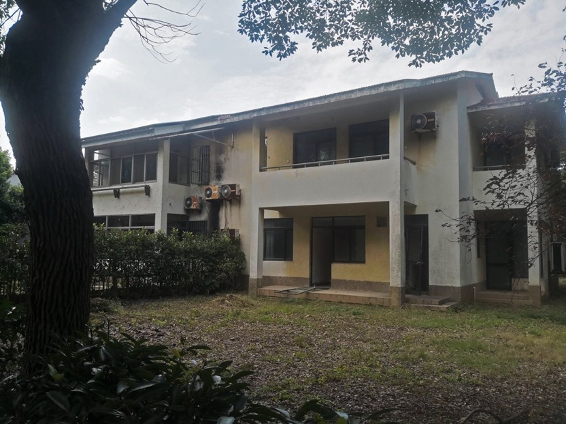For Want of a Muzzle
- Brad Shen

- Oct 25, 2020
- 4 min read
June 13, 1859. Lyman Cutlar, an American farmer, finds a pig eating the potatoes growing in his garden. This isn’t the first time, and so the angry Cutlar shoots and kills it, only for Charles Griffin, the British owner of the pig, to show up and ask why Cutlar killed his pig.
Cutlar says, “It was eating my potatoes.” To which Griffin replies, “It is up to you to keep your potatoes out of my pig.”
Cutlar offers $10 to compensate but Griffin will only take $100. The British threaten to arrest Cutlar. The American settlers ask for US intervention.
If you ever fly into Seattle from the north, try to get a window seat on the left. As your plane starts to descend, you’ll see a small city with fleets of watercraft thronging the sea in front of it. That’s Victoria, British Columbia. It’s on Vancouver Island (and Vancouver isn’t). In the distance you might see another city and high mountains behind it. Between the two, scattered in the water like puddles on a concrete sidewalk, are the San Juan Islands. You may wonder whether these islands are American or Canadian. If so, you’re not alone—160 years ago they did too.

The San Juan Islands are not large; they were disputed because they were in a good place. Neither Vancouver nor Seattle is located directly on the Pacific Ocean. Rather, they face a waterway called the Inside Passage which is shielded from the open ocean by islands like Vancouver Island. The British established a fort at Victoria, whose cannons covered the Strait of Juan de Fuca, the strait by which ships from across the Pacific got into the Inside Passage. But set up a base in the San Juan Islands, and all the traffic going north from there, west of the archipelago, to the Strait of Georgia to Vancouver, will pass within range of your guns. Pretty nice to have, just in case of a war.
In the early 19th century, both Britain, which owned Canada at the time, and the United States were frantically expanding west in North America, defying nature and the natives. To prevent conflict on the West Coast, the border they’d agreed on in 1818 was the 49th parallel north from Minnesota to the Rockies; everything west of that was named “Oregon Country” and was run by both Britain and the US.
Both countries knew joint administration wasn’t tenable in the long term—in the end, the only thing that really counted were the boots on the ground. So they immediately began a “move as many people as you can” competition. Unsurprisingly, the United States won, being only half a continent (as opposed to one continent and one ocean) away. The two nations argued over the territory for a while, but eventually signed a treaty in 1846. The existing border would be extended, and after it hit the sea, the boundary would go to the middle of the channel which separates the continent from Vancouver Island, and then through the Strait of Juan de Fuca into the Pacific Ocean.
The problem was the maps the negotiators had used were almost 50 years old and didn’t accurately depict the San Juan Islands. There were two straits in the region, and both fit the treaty’s definition. Britain argued for one, and America argued for the other. In 1856, commissions from both countries met and argued for two more years, only for them to part ways and decide to do their own thing.
One year later, Lymar Cutlar shoots a pig, and the US Navy arrives on San Juan Island with 66 soldiers, making camp directly under the guns of a British ship. He was promptly reminded of his mistake and he moved his cannon a few miles away to high ground that overlooked the Strait of Juan de Fuca. Funnily enough, nobody was there to remind him 4 years later, when he would send 12,500 Confederate soldiers marching straight into Union guns, with perhaps predictable results. The British responded by sending three warships to prevent a population of American “squatters” from claiming the islands.
No shots were fired, as both contingents were under strict orders not to, but tensions continued to escalate. It got to the point where tourists arrived in boats from nearby Victoria to watch the men exchanging insults. Each side tried to taunt the other into shooting, but, maybe a little disappointingly, nothing ever happened.
When news reached their respective capitals, their leaders were shocked by how close they’d gone to war—all over a pig. US President James Buchanan, exercising the common sense he lacked two years later when the American Civil War began, quickly decided to talk it out. The United States decided to withdraw all their men from the islands, until a final decision could be reached. In 1871, the border was declared to be Haro Strait by the German Emperor, Wilhelm I, whom the parties had asked to mediate the dispute, and both countries withdrew their troops.
The British and the Americans garrisoned on the island had a moment where they looked at each other and went, “What are we doing anyway?” and got along swimmingly. Officers even went to church services and played sports together, while the men celebrated each other’s national holidays.
Today, the island is part of the United States; a national historical park, easily accessible by state ferry from Anacortes on the mainland, commemorates the “war”. The “English Camp”, where the British were based during the “war”, is one of the few places where the British flag is raised by the US government.


Comments